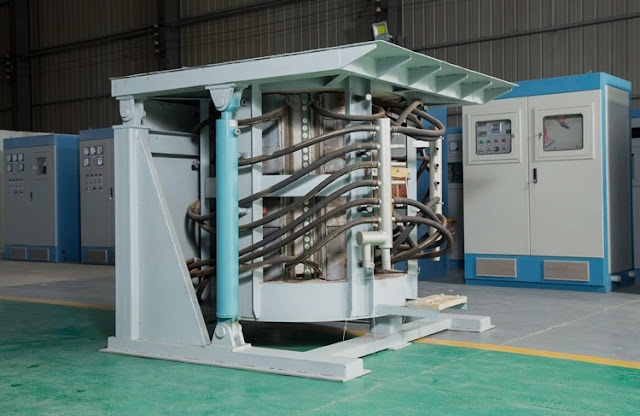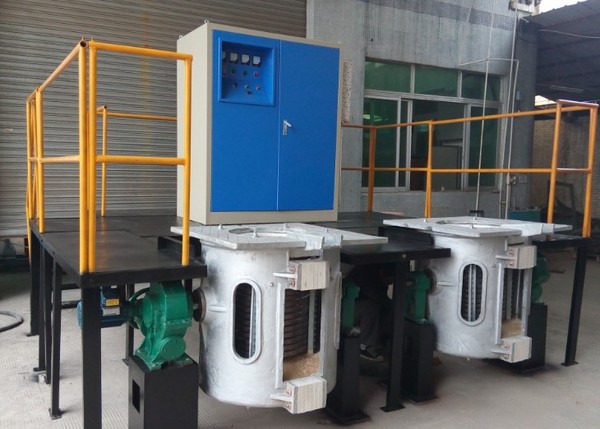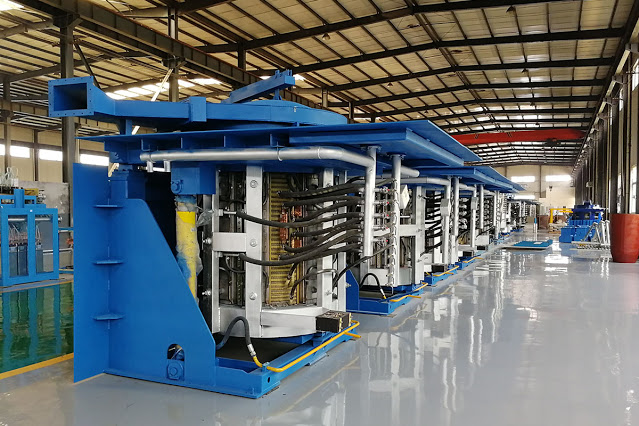1. The main factors affecting the quality of wire rod
In the production of a high-speed wire rod mill, the coil quality of the laying head is often unsatisfactory, that is, the coil is oval, the coil is larger or smaller, and the stack is disordered and uneven on the air-cooled line, especially when rolling small-size wire rod. From the spinneret's work process, the spinneret's speed and the laying head is the main influencing factor.
(1) Spinneret
The spinneret is installed on the spinning disk, which is a spiral curve with a spatial cone shape. Although the curves of various manufacturers are different, they can be divided into three sections: first, the initial section is straight, and the wire rod does not undergo plastic bending deformation; The second is the deformation section in which the wire is deformed plastic with the bending shape of the spinneret; Thirdly, the wire rod continues to deform and form a stable coil. The shaping section is very important for the shape of the spinning coil. The end section of the exit of the spinneret is generally at an angle with the spinning pan surface to make the outgoing coil produce forward speed. Then, the overall and horizontal surface of the spinneret is 10 °~ 20 °, and the coil can be ejected smoothly from the spinneret and spread on the air-cooled roller table.
The angle of the pipe mouth of most spinnerets is not adjustable. Therefore, when the rolling speed changes, the horizontal forward speed of the coil is different, which will cause the coil falling on the air cooling roller table to deviate from the set best condition, that is, the unsatisfactory ring shape will appear. Therefore, the first section of the air cooling roller table is designed to be adjustable in height, so that the vertical distance from the spinning plate to the air cooling roller can be adjusted. By adjusting the height of the roller table, the coil can be correctly laid on the roller table. However, in actual production, it is difficult to master due to the lack of operation experience, which leads to the coil falling down obliquely. When producing a small-scale wire rod, the front of the coil is faster than the rear because of the high horizontal speed. When the adjustment height is not the case, the coil will be inclined and placed on the roller table. Because the wire rod is thin and soft, the coil is easy to form an ellipse.
(2) Speed control of the laying head
The diameter of the coil ejected by the spinneret is not constant and the size is not a moment, which will also affect the appearance quality of the bales. Therefore, it is very important to ensure the coil diameter of the spinneret is constant. When the wire passes through the spinneret, the motion state changes from linear motion to circular motion, and the line speed is VW. at this time, the rotating line speed of the pipe mouth of the spinneret is VL. if the size of VW and VL are equal and the direction is opposite, the synthetic speed of the wire rod in the spinneret mouth relative to the earth is 0. Because of the downward inclination of the spinneret, Therefore, the wire rod will be parabolic in three-dimensional coordinates (the vertical direction is free-falling), so that the curvature radius of the wire when it is ejected is constant, namely the coil diameter.
To ensure that different wire specifications can meet the requirements of VL=VW in the whole process of wire drawing, to stabilize the coil diameter, generally, there are two clamping rollers in front of the spinner. There are two clamping systems: one is to clamp the wire in the whole process, and the micro tension control method is adopted to match the speed of the finishing mill, pinch roller and spinner; The second is tail clamping, small-size wire rod adopts tail speed reduction clamping, in order to prevent the phenomenon of rising speed when the tail out of the fine rolling mill, while the large-scale wire rod adopts tail speed up clamping to promote the wire to smoothly exit the spinner and form a circle. When VL≠VW, the velocity of the coil relative to the earth in the direction of the disk surface is not 0, that is, the coil has an angular velocity relative to the earth, so there will be a certain offset in the falling process. When VL>VW, the relative angular velocity direction is consistent with the spinning direction of the spinneret, and the coil will be left (see the rolling line); When VL<VW, the relative angular velocity direction is opposite to the spinning direction of the spinneret, and the coil will be shifted to the right. When the coil is left or right, it will collide with the side plate of the air-cooled wire and damage the wire surface.
2. Common failures and treatment methods in production
(1) Spinning machine tail-flick
It refers to the phenomenon that the tail of the wire rod can not be ejected smoothly from the spinneret and collides with the spinning surface of high-speed spinning. The reason is that the throwing angle of the pipe mouth is small, and the forward speed of the wire rod is not enough to make the tail leave the spinning surface. The solution is to adjust the throwing angle of the spinneret properly, but for the tail clamping process, it is necessary to ensure the clamping roller is reliable.
(2) Uneven loops of the laying head
It refers to the diameter of the coil that the spinneret spits out is different. The reason is generally related to the speed matching between the spinneret and the finishing mill. It can be solved by adjusting the advanced amount of the spinning. When producing a small wire rod, it is easy to produce a large circle phenomenon at the tail, because the tail will gradually increase speed when leaving the finishing mill, while the speed of the spinneret changes very little, so the diameter of the tail ring becomes larger; For large-scale wire rod, especially the round bar with ribs, most factories adopt tail nonpinch process to ensure the surface quality of wire rod, which will lead to the speed of wire rod end entering the spinner, and thus reduce the coil diameter. Therefore, it is suggested to clamp the tail of a large-size wire rod, and reduce the clamping pressure of the clamping roller to avoid damage to the surface.
(3) Uneven tiling
In order to make the coil evenly spread on the air-cooled roller, the other important factor is the spinning pipe, except that the speed of the roller bed must be constant. When a spinneret produces several specifications of wire, the quality of the coil is often unstable, and it is easy to spread uneven or spit the size circle. This is because wires of different specifications have different spinning speeds, which produce grooves with different trajectories in the spinning tube. Wires passing through this tube are prone to trajectory deviation. Therefore, the best solution is to replace different spinneret tubes when rolling different specifications. When rolling small sizes, one pipe can be used to match one variety, while rolling large size (e.g More than Φ10 mm) a threaded pipe can be shared when the wire rod is used.
(4) The coil is oval
When the small wire is produced and the temperature of spinning is too high, it is easy to appear circle ellipse, because of the soft wire. In addition, the air-cooled roller table height is too low, the coil falling distance of the spinneret is too large, it is also easy to appear ellipse. When the front throw angle of the pipe mouth is too large, the wire rod has a large forward split speed, which causes the coil to fall into the roller table obliquely. For the spinner without head positioning function, the coil is easy to be stuck in the gap of the roller table and the production accident occurs. Therefore, to solve these problems, we must analyze and solve the problems from three aspects: the throwing angle of the spinning pipe, the height of the roller table, and the spinning pipe's temperature.
If you are interested in the laying head or wire rod production line, please mail at marketing2@hanrm.com.
More Articles You May Be Interested:
Technical Progress of High-speed Wire Rod Mills
Process Adjustment of Wire Rod Mill










